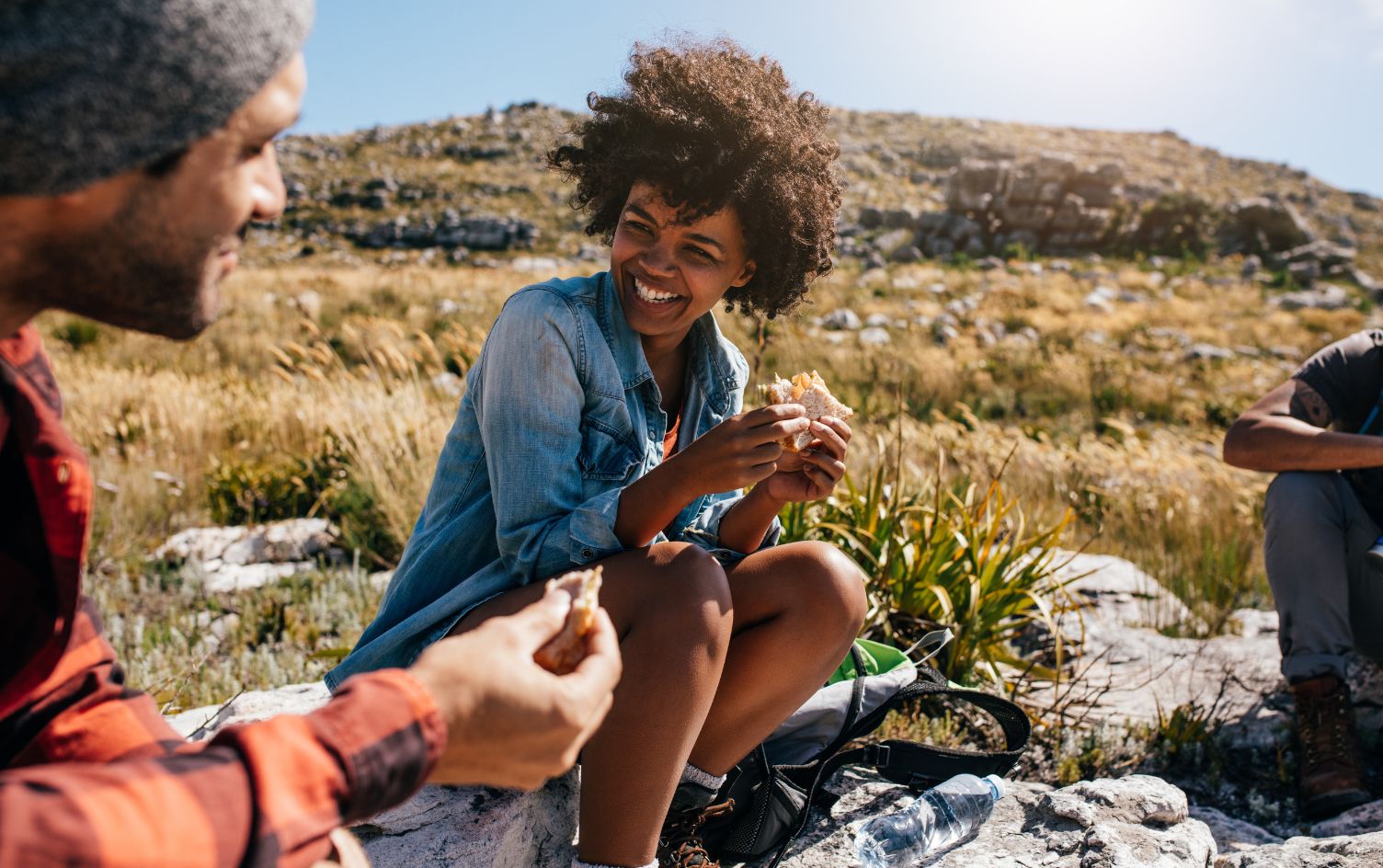In 2020, 57.81 million people over the age of 6 went hiking in the U.S. That’s huge jump from the 49.7 million people who hiked in 2019 and 47.86 million who hiked in 2018. In addition to the response to COVID lockdowns, much of the popularity comes from how inclusive the activity is; little equipment and skill is needed to get started on a beginner route. Of course, once hooked, you can take your activity from day trips on paved paths to more uncharted, adventurous territory. Regardless of skill or terrain being tackled, one thing remains the same: How important it is to fuel your hike as you spend the day being active and exposed to the elements.
MAIN FUELING CONCERNS FOR YOUR HIKE
LENGTH OF THE TRIP
Hiking is a slow sport, and trails are typically designed to be hiked for several hours at a time, meaning hikers can expect to be out in the wild for that duration at a minimum. The longer your adventure, the more food and drink you need to bring. To bring your food along, find a pack (backpack, hip pouch, etc…) that fits the demands of your adventure; size, pockets, water reservoir and comfort. As your hike times increase, be mindful of food-safety concerns. For hours out in the sun, packing non-perishable options are best, and for multi-day trips, lightweight foods bristling with high caloric and nutritious value are key.
LEVEL OF EXERTION
Looking to enjoy the view over breaking a sweat? Take nutrient dense, whole foods along like fruit, trail mix and sandwiches. If you plan on using bursts of energy to tackle technical sections of trail, bouldering or parkour-style hiking, bring foods that provide-quick burning energy like sport bars, gels and drink mixes.
REMOTENESS AND DURATION
Snack-ready food that can be consumed with your hands and without extra equipment is the easiest way to go. If your trek is multi-day and demands a more complicated nutrition plan, consider all food ‘accessories’ you’ll need: utensils, a cloth napkin or moist towelettes, lightweight plates/bowls, ice packs, cooking equipment, etc. On remote trails, there is usually a ‘carry in, carry out’ policy, meaning you take your trash with you. Try more sustainable options like Beeswrap, Stasher Bags and titanium utensils to keep your waste to a minimum.
READ MORE > REAP THE BENEFITS OF A WALKING MEDITATION
SUGGESTED HIKING SNACKS
Trail Mix
Dried Fruit
Granola Bars
PBJ
Granola Bars
Apples
Jerky (grass-fed beef or ahi tuna)
Date Rolls
Electrolyte Mix
Rice Cakes
Pureed Food Pouches (think elevated baby food)
Freeze-Dried Snacks
Sport Gels
Crackers with hummus/cheddar/nut butter
Fueling your hike should be more carefully thought out than tossing random snacks into your sack. Always consider the goals of your hike and overall nutrition when choosing your options and remember to eat and drink consistently throughout the activity to keep energy and hunger levels controlled.
Originally published May 2018, updated August 2023
Ready to take the next step? Unlock MyFitnessPal Premium to access custom goal settings, quick-log recipes, and guided plans from a registered dietitian. Premium users are 65% more likely to reach their weight loss goals!




